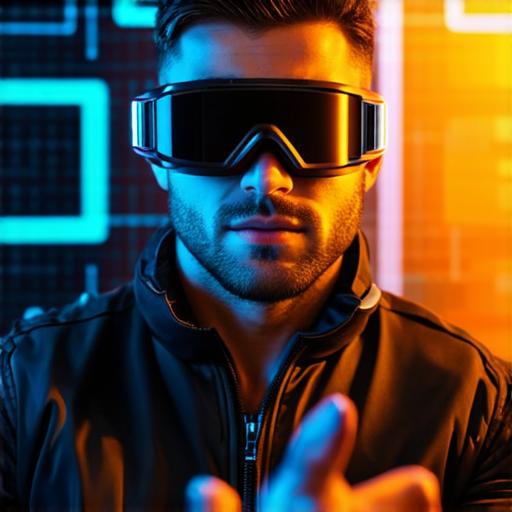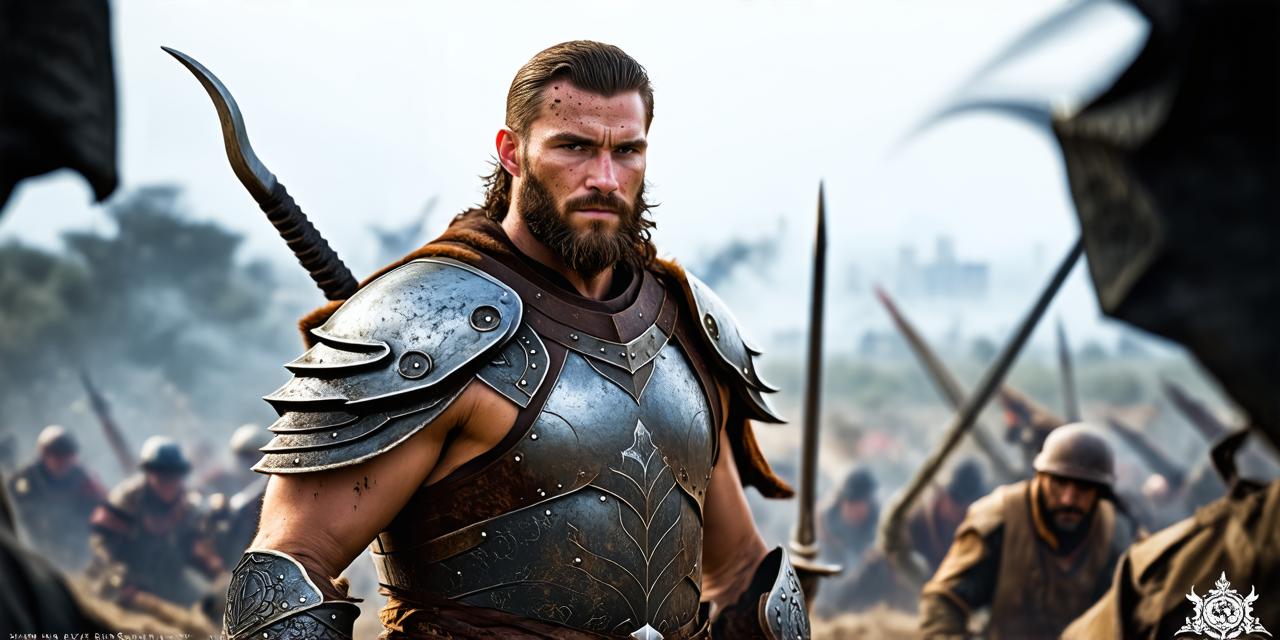Mixed Reality vs Augmented Reality: Understanding the Differences
Augmented reality (AR) and mixed reality (MR) are two emerging technologies that have gained significant attention in recent years. While they share similarities, there are distinct differences between them that can impact the way you create interactive experiences for users.
What is Augmented Reality?

Augmented reality (AR) enhances the user’s view of the real world by overlaying digital elements on top of the camera feed. This can include text, images, and animations. AR applications are designed to be interactive, allowing users to interact with the digital elements in the real world.
What is Mixed Reality?
Mixed reality (MR) takes augmented reality one step further by allowing users to interact with both the real world and digital elements simultaneously. MR applications are designed to be more immersive than AR applications, creating a more realistic experience for users.
Key Differences Between Mixed Reality and Augmented Reality
- Level of Immersion: Mixed reality provides a higher level of immersion than augmented reality. In MR, users are completely immersed in the digital environment, while in AR, they remain connected to the real world.
- Interactivity: Mixed reality applications are designed to be more interactive than AR applications. In MR, users can interact with both the real world and digital elements simultaneously, creating a more engaging experience.
- Hardware Requirements: Mixed reality applications require more powerful hardware than augmented reality applications. This is because MR applications require more processing power and memory to create a seamless experience for users.
- Cost: Mixed reality technology is generally more expensive than augmented reality technology. This is because MR applications require more advanced hardware and software to create the immersive experience for users.
Case Studies and Personal Experiences
Let’s take a look at some real-life examples of how mixed reality and augmented reality are being used in various industries:
1. Healthcare
Mixed reality is being used in healthcare to simulate surgeries and other medical procedures. For example, the University of California San Francisco (UCSF) has developed a MR system that allows surgeons to practice complex surgeries on virtual patients while remaining connected to the real world. This technology has been shown to improve surgical outcomes and reduce the risk of complications.
2. Education
Augmented reality is being used in education to enhance learning experiences for students. For example, the Discovery VR app allows students to explore the solar system in 3D using AR technology. This app has been shown to improve student engagement and understanding of complex concepts.
3. Gaming
Mixed reality is being used in gaming to create more immersive experiences for players. For example, the Oculus Quest 2 headset allows players to enter virtual worlds and interact with other players in that world. This technology has been shown to improve player engagement and create a more realistic gaming experience.
4. Retail
Augmented reality is being used in retail to help customers visualize products in their home before making a purchase. For example, IKEA’s AR app allows customers to see how furniture will look in their home before buying it. This technology has been shown to improve customer satisfaction and reduce return rates.
5. Manufacturing
Mixed reality is being used in manufacturing to simulate production processes and identify potential issues before they occur. For example, GE Aviation uses MR technology to simulate aircraft engine parts assembly, allowing engineers to test different configurations and optimize the process for better efficiency.
6. Fashion
Augmented reality is being used in fashion to allow customers to try on clothes virtually before making a purchase. For example, H&M’s AR app allows customers to see how clothing items will look on them using their smartphone camera. This technology has been shown to improve customer satisfaction and reduce the number of returns.
Expert Opinions
“Mixed reality provides a more immersive experience for users, making it ideal for applications that require a high level of interaction,” said Dr. Mark Noland, Chief Medical Officer at the University of California San Francisco.
“Augmented reality is great for enhancing learning experiences and providing interactive elements to customers,” said Dr. Jane McGonigal, a game designer and author.
“Mixed reality technology has come a long way in recent years, and we are starting to see more and more applications in various industries,” said John Carmack, co-founder of id Software.
Real-Life Examples
Let’s take a closer look at some real-life examples of how mixed reality and augmented reality are being used in various industries:
1. Healthcare
Mixed reality is being used in healthcare to simulate surgeries and other medical procedures. For example, the University of California San Francisco (UCSF) has developed a MR system that allows surgeons to practice complex surgeries on virtual patients while remaining connected to the real world. This technology has been shown to improve surgical outcomes and reduce the risk of complications.
2. Education
Augmented reality is being used in education to enhance learning experiences for students. For example, the Discovery VR app allows students to explore the solar system in 3D using AR technology. This app has been shown to improve student engagement and understanding of complex concepts.
3. Gaming
Mixed reality is being used in gaming to create more immersive experiences for players. For example, the Oculus Quest 2 headset allows players to enter virtual worlds and interact with other players in that world. This technology has been shown to improve player engagement and create a more realistic gaming experience.
4. Retail
Augmented reality is being used in retail to help customers visualize products in their home before making a purchase. For example, IKEA’s AR app allows customers to see how furniture will look in their home before buying it. This technology has been shown to improve customer satisfaction and reduce return rates.
5. Manufacturing
Mixed reality is being used in manufacturing to simulate production processes and identify potential issues before they occur. For example, GE Aviation uses MR technology to simulate aircraft engine parts assembly, allowing engineers to test different configurations and optimize the process for better efficiency.
6. Fashion
Augmented reality is being used in fashion to allow customers to try on clothes virtually before making a purchase. For example, H&M’s AR app allows customers to see how clothing items will look on them using their smartphone camera. This technology has been shown to improve customer satisfaction and reduce the number of returns.
FAQs
1. What is the main difference between mixed reality and augmented reality?
“Mixed reality provides a more immersive experience for users, making it ideal for applications that require a high level of interaction, while augmented reality enhances learning experiences and provides interactive elements to customers.”
2. How expensive is mixed reality technology compared to augmented reality technology?
“Mixed reality technology is generally more expensive than augmented reality technology due to the need for advanced hardware and software to create the immersive experience for users.”
3. What industries are using mixed reality and augmented reality the most?
“Mixed reality is being used in healthcare, gaming, manufacturing, and fashion, while augmented reality is being used in education, retail, and fashion.”
